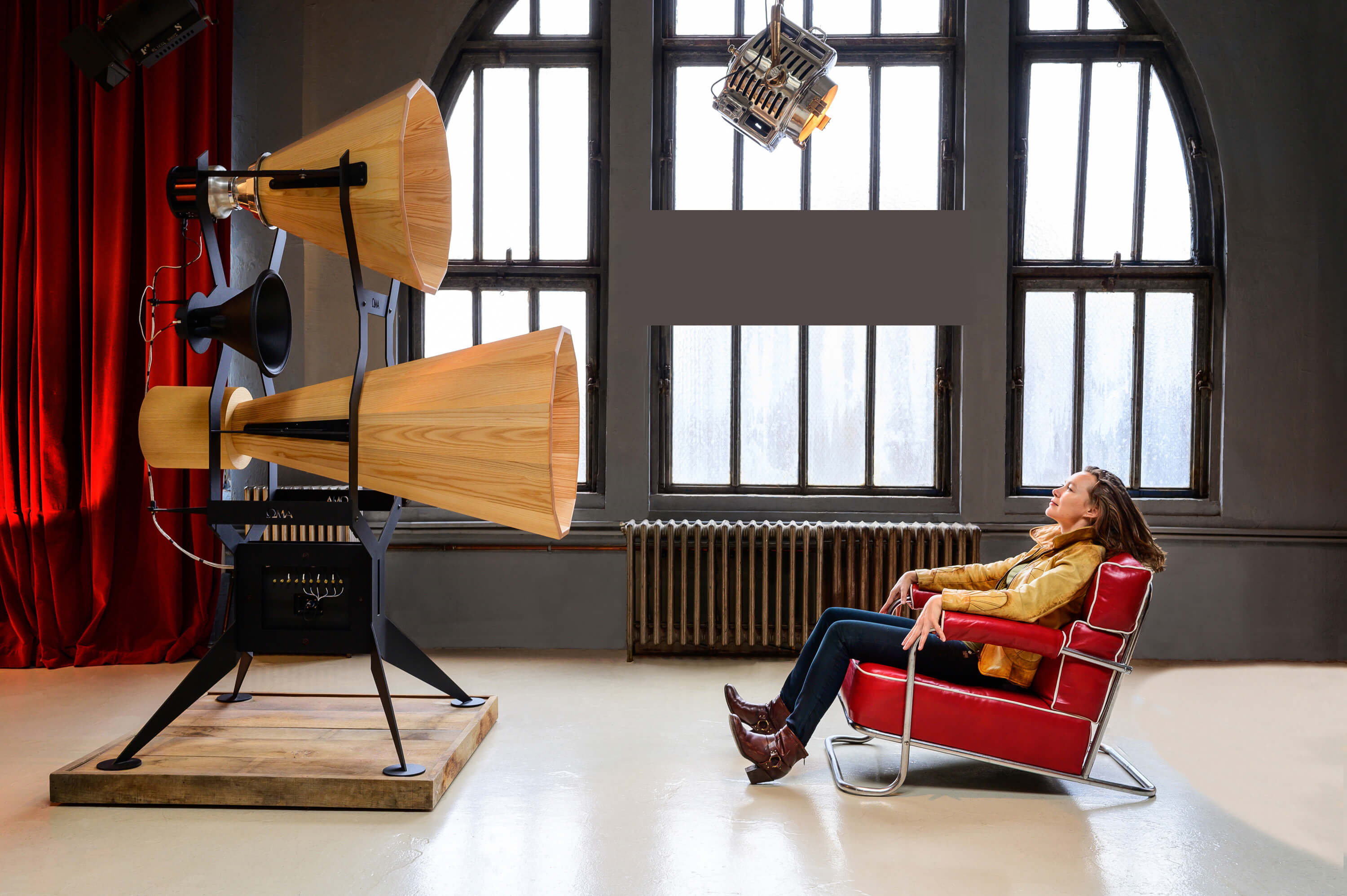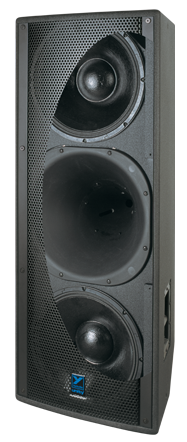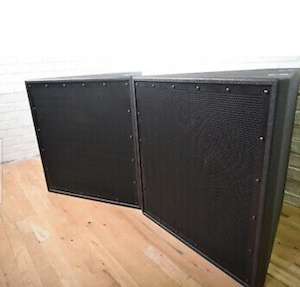For some reason, I got the urge to get some speakers again. This is very impractical. It has been about five years since I had a pair of speakers, having sold off the previous pair in early 2015. Since then, I have been listening to headphones, which has been very nice. Big speakers (and I like them big) don’t really fit in with my living situation and lifestyle. But, I bought some anyway.
In the summer of 2020 I acquired a pair of Yorkville U215 speakers, used, from a dance club in Lower Manhattan. They were $1000 for the pair. This is a good price. Eventually, I will probably sell them for more than this. The Yorkville U215 was designed by Bill Woods, then a designer at Yorkville. Woods was (he is retired or perhaps deceased) one of the best horn speaker experts of the U.S./Canada, and was particularly fond of conical horns. Woods designed the speakers for OMA, such as the magnificent Imperia horn system.

That system costs well north of $100,000. Mine cost $1000. The U215, even at its new price of $3200 a pair, was still a bargain for what you got, taking advantage of Yorkville’s economies of scale.
The U215 uses a Unity Horn above 300hz, a design by Tom Danley of Danley SoundLabs. Tom Danley is, along with Woods, the other Great Horn Designer of our time, in the English-speaking world. The Unity Horn combines a 1″ compression driver with three 5″ cone drivers on a single horn, with a crossover around 1200hz and 300hz. Basically it does the same job as the two smaller horns in the Imperia, combined on one much smaller horn. This is combined with a pair of 15″ cone drivers for the bass. If there’s one thing better than a big 15″ woofer, it’s two big 15″ woofers. If you want your systems to have scale, majesty, and dynamics, you need lots of cone area.

Unfortunately, the U215s were so large that they were really not appropriate for our small living room, as I hoped, and my wife banished them to the barn. She was right about this.
There are some other interesting professional audio boxes out there, with similar characteristics that you can often get very cheaply. Of course, I still recommend the Danley stuff, especially the SH50, but they are hard to find. Here is a pair of SH50s for $4500, on eBay. I would snap them up.

Now that a lot of movie theaters are closing, there are some amazing theater systems being sold off for peanuts.
Here is a very nice JBL horn system with twin 15″ woofers, for $575 each on eBay.

This one is $750 each, with the famous JBL “butt cheeks” horn.

JBL’s best. I hope you have a living room that can handle it. I saw a pair sell for $5000. These are $16,500, but they include three speakers, travel cases, 13 channels of amplification and four digital processors.

The bass on the U215 is a little compromised, with a somewhat high cutoff to allow a tolerably small cabinet. It doesn’t go much below 50hz. So, I combined them with a pair of 15″ sealed subs that I made some years ago, as part of my prior speaker system. The whole stack is about 6 feet high.
You can do a lot with the U215s. I would like to eventually have a separate amp on each driver, a four-way system including the sub, with crossover duties done digitally with FIR filters for best impulse response. I even got an 8-channel digital-analog convertor for this purpose. But, it is a lot of bother. So, for now, I hooked it up to an amplifier I have about here, based on the LM3875 “chip amp” made famous 20 years ago by 47 Labs. It still sounds good. I have been running the U215s full range, adding the sub down below. The sub is heavily EQ-ed (using a digital crossover from miniDSP) to be flat to 20hz. It is run on a cheap power amp from Behringer. The source is the headphone output of my Fiio M11 portable music player.
The next incremental step, I think, will be to put together an 80hz line-level crossover, to filter the bass out of the signal going to the U215s. Then, I will probably stuff the ports, to give it a sealed or infinite baffle configuration. This should clean up the transition to the subs. I would also like to put together some “chip amps” of my own, based on the LM1875, and run on batteries, naturally. I have all the parts already, and I just need to put it together. Then, I would like to take out the speaker crossovers, and put them in a separate external box, and put jacks in the back allowing direct connection to the drivers. This is a step toward multi-amping. I have been thinking about a set of tube amps based on the PL519 in push-pull, producing about 6 watts, which would be used on the horn, while the woofers get their own big power amp. But, all of that might be more bother than I care for, since I have other things to do.
As it stands, the results are pretty good. It does not have, I think, the extraordinary delicacy, exquisite tone, expressiveness and ear-grabbing immediateness of my prior horn system, which had a pair of 1930s-era horns run 120hz-6000hz with some 2A3 amps, directly connected with line-level crossovers. But, that was really special. Triode amps hooked directly to compression drivers is a wonderful audio drug. As it is, the LM3875 amp has enough refinement to produce a very pleasant midrange, and enough power to give us some bass slam. Adding the subs with extension down to 20hz does a lot. They give a great sense of “space,” like being in a cathedral. I don’t think I have ever had such extended and clean bass before. (When I used these same subs earlier, I did not have them EQed flat to 20hz). As you can imagine, with the horns and big cones, they have a lot of scale and dynamics, which are important to me. Of course you can turn them up as much as you want. They are rated for 1600 watts at 98db/w/m; or, 134db peak output.
This is not very much effort (or money) for such a great result. Have fun with it.

